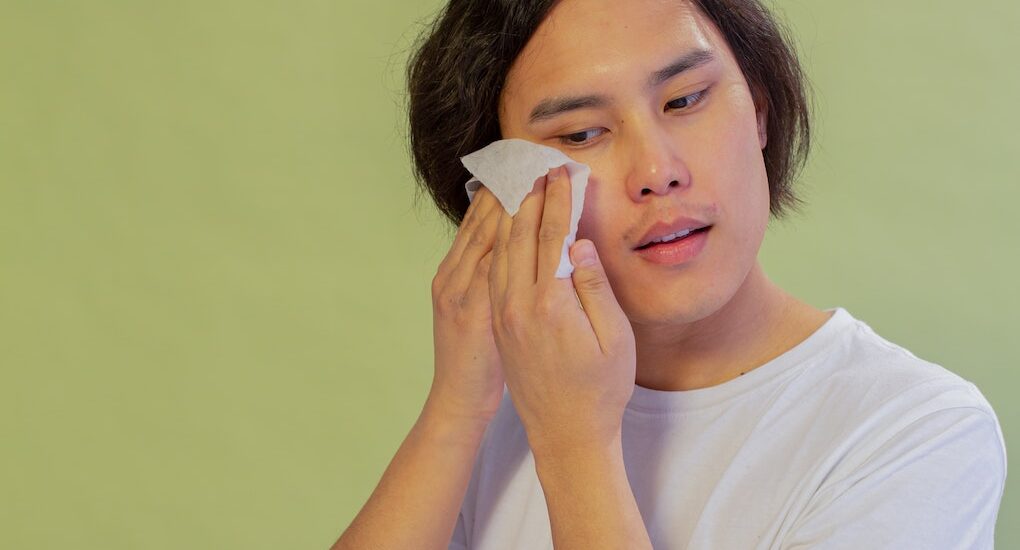If you’re wondering how to care for your skin after extractions, this comprehensive guide is for you. From the immediate steps to take post-extraction to the long-term care needed to maintain healthy skin, we’ve got you covered.

Table of Contents
Step 1: Understand What to Do After Skin Extractions
Following the right post-extraction care can make the difference between a quick recovery and potential skin problems. Here’s what to do:
Avoid Direct Sunlight: Sun exposure can cause further irritation to the extracted areas. Use a sun hat or stay in shaded areas for 48 hours. Sunlight may cause hyperpigmentation on the recently treated skin, prolonging the healing process.
Stay Away from Harsh Skincare Products: Products containing strong chemicals can exacerbate redness and irritation. Instead, choose mild, soothing products without fragrances or alcohol. Your skincare professional can recommend suitable products.
Apply a Gentle Moisturizer: Your skin will likely feel dry and tight after extractions. Using a gentle, hydrating moisturizer helps to replenish moisture. Look for products with hyaluronic acid or glycerin, known for their hydrating properties.
The Amazon-listed Vitalysin Retinol Cream contains hyaluronic acid and vitamin E and can be used for all skin types.
Step 2: Implement a Gentle Skincare Routine
Your daily skincare routine needs to adapt to the sensitive state of your skin after extractions. Here’s how:
Use a Mild Cleanser: Opt for a cleanser with a low pH balance. Avoid scrubbing or using exfoliating brushes, as they can irritate the skin. Gentle cleansing helps prevent infections and promotes healing.
Apply Sunscreen with SPF 30 or Higher: Even indirect sunlight can affect the healing process. A sunscreen with SPF 30 or higher offers protection without clogging pores. Remember to reapply every two hours if you’re outdoors.
You can try the Hawaiian Tropic Sheer Touch Lotion Sunscreen from Amazon. It has a broad spectrum SPF 30.
Stay Hydrated: Drinking enough water ensures that your skin stays hydrated from the inside. Keeping your body well-hydrated supports overall skin health and accelerates healing.
Step 3: Monitor for Signs of Infection
While rare, infections can happen. Knowing what to look for helps you act quickly:
Increased Redness and Swelling: Some redness is normal, but an increase after 48 hours may be a sign of infection. Immediate medical attention is advised in this case.
Pus or Oozing: Any sign of pus or oozing from the extraction sites is a clear indicator of infection. Contact your healthcare provider right away.
Unusual Pain or Itching: Mild discomfort is expected, but severe pain or itching may indicate an underlying issue. Consultation with a healthcare professional is essential to assess the situation.
Check out these other related articles…
How Long Does It Take for Skin to Heal After Extractions?
What to Put on Face After Extractions: Comprehensive Guide
Blotchy Skin After Extractions: The Comprehensive Guide
How to Heal Skin After Extractions: The Ultimate Guide
How to Get Rid of Redness After Extractions: Your Easy Guide
Step 4: Long-Term Care for Healthy Skin
Your skin requires ongoing attention to stay healthy, especially after extractions. Here’s a guide to long-term care:
Continuing a Gentle Skincare Routine: Even after healing, a consistent gentle skincare routine supports overall skin health. Regularly cleanse, moisturize, and protect your skin from the sun.
Eating a Balanced Diet: Nutrient-rich foods support skin health from the inside. Vitamins A, C, and E, as well as omega-3 fatty acids, are particularly beneficial for skin health.
Consulting a Skincare Professional Regularly: Regular visits to a dermatologist or esthetician can ensure that your skin remains healthy and vibrant. They can detect potential issues early and guide you in maintaining optimal skin health.
All these steps are endorsed by dermatology professionals, such as those in the American Academy of Dermatology (source) and the Skin Cancer Foundation.


